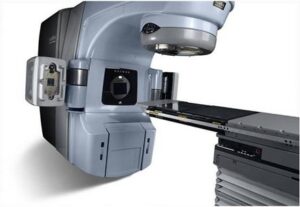Radiation Treatment for Peritoneal Mets
 CT, MRI, and ultrasound techniques will assist in the very difficult role of identifying peritoneal metastases.
CT, MRI, and ultrasound techniques will assist in the very difficult role of identifying peritoneal metastases.
Radiotherapy has historically been used in the treatment in both adjuvant or palliative settings for ovarian, endometrial, and gastrointestinal cancers, having whole abdomen as target volume. The first experiences date back to the 80s and 90s and are based on obsolete delivery technologies (that did not allow doses sufficient for disease control).
IMRT
intensity modulated radiotherapy (IMRT ) created new opportunities for peritoneal treatment with radiation therapy, thanks to the more conformal dose distribution to the target and the reduction of unnecessary irradiation of the organs at risk (OARs)
Radiation therapy delivery technology has dramatically progressed to the possibility of performing image-guided radiotherapy (IGRT) and stereotactic body radiotherapy (SBRT), allowing more precise radiation treatment delivery and dose escalation. More recent developments have led to the possibility to take advantage of on-board Magnetic Resonance Imaging (MRI) combined with Linear Accelerator (MRI-Linac Systems), especially with small target hardly visible with standard techniques, as often occurs in SBRT of abdominal targets
(MRgRT)
Magnetic Resonance guided Radiation Therapy (MRgRT) allows superior soft-tissue contrast and online cine-MRI guidance to be combined with gating techniques. This promotes cutting edge motion management strategies which enable the daily performance of plan re-optimization prior to the delivery of each fraction.




